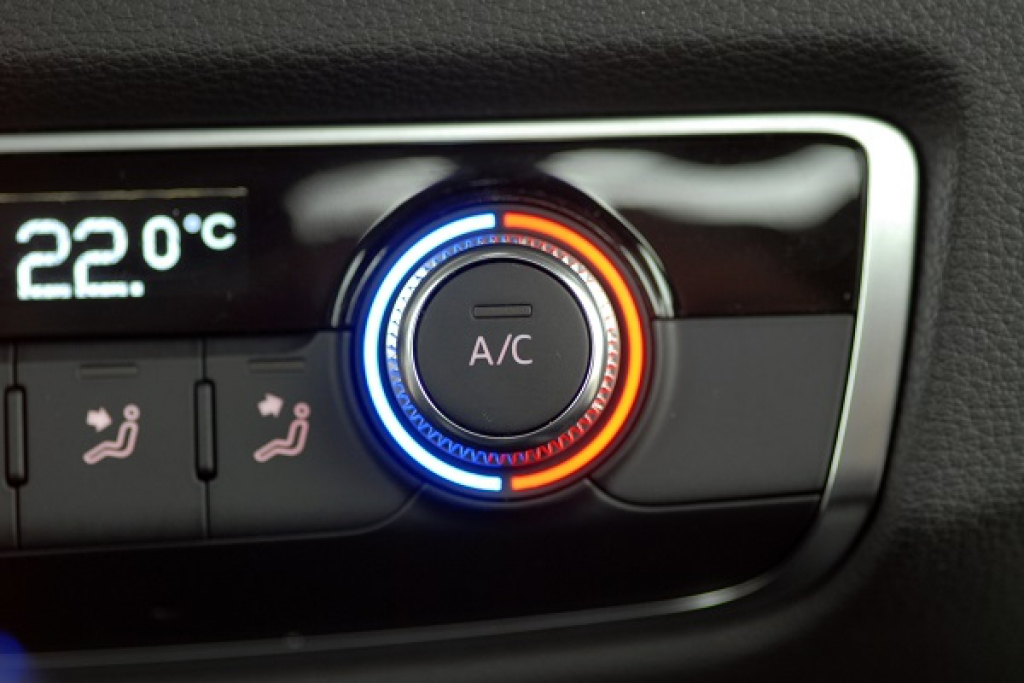Air conditioning is standard equipment in almost every car these days. The efficiency of its operation depends, first of all, on the car owner himself, but if the air conditioner is serviced correctly and regularly, it will last for many years.
Based on the principle of operation, a car air conditioner is similar to a home refrigerator: gas circulating in a closed, sealed system cools the air by “contacting” with it through a heat exchanger called an evaporator. For optimal cooling, the gas in the evaporator must be at a low temperature. The heat taken from the air supplied to the cabin is removed outside using the air conditioner radiator.
The air conditioning system in a car consists of the following elements:
1) condenser. It transfers to the air the heat that the refrigerant received in the evaporator. The larger the condenser, the more efficiently it works. When the car is stationary and in case of maximum air cooling, the radiator fan “helps” the condenser. To ensure sufficient cooling, the condenser is placed in front of the engine radiator. Contaminants that accumulate on the radiator (such as insects) reduce the efficiency of the condenser;
2) dehumidifier. The refrigerant from the condenser enters the diverter. The refrigerant is cleaned and dried in the diverter. Solid contaminants such as sawdust and dirt can settle in the orifice hole and interfere with the operation of the evaporator. The most common coolants in modern cars are Zeolith (better known as R134a) and the relatively new R1234yf;
3) expansion valve. It is responsible for the evaporation of coolant, which leads to the removal of heat from the air prepared for injection into the cabin. For this purpose, the coolant is expanded to evaporation pressure using an oil seal. The expansion valve operates as an adjustable flow valve (stuffing box). The cross-section of the nozzle provides the refrigerant flow in the amount necessary to cool the air;
4) evaporator. The evaporator is the second heat exchanger in the system. A fan controls the air supply to the car interior. In the process of air cooling, exceeding the temperature of the lower dew point is accompanied by dehumidification of the air. The condensate begins to drip into the bowl under the evaporator, and from there it is discharged outside using a flexible hose;
5) compressor. Its main task is to increase gas pressure and supply it to the condenser. Since the compressor is lubricated by the oil contained in the coolant, it is necessary to ensure that the amount is correct and also ensure that the air conditioner operates regularly, even in winter. The compressor is one of the most expensive parts of an air conditioning system.
Various impurities contained in the air easily settle on the constantly wet outer surface of the evaporator. After some time, bacterial cultures or fungi may appear there. Even placing a microfilter in the airflow path does not help in this situation. Therefore, it is necessary to periodically thoroughly clean the evaporator with a special bactericidal agent. During this procedure, it won’t hurt to replace the cabin filter at the same time.
Don’t wait for the air conditioner to start working less efficiently – regular refrigerant charging in combination with cleaning the system will not only keep the air cool enough on hot days, but will also extend the life of the compressor. In addition, the refrigerant also acts as a lubricant and sealant. Regular refilling is especially important in new vehicles, where the air conditioning systems are filled with less refrigerant. It should be remembered that even a fully functional air conditioning system loses an average of 10% of refrigerant each year.
Air conditioning provides more than just comfort. When the air inside a car reaches 27°C, the driver’s reaction time drops by as much as 20%. According to Webasto experts, the problem of overheating also affects passengers, and above all small children and the elderly, who can easily suffer from serious dehydration and heat stroke. Therefore, it is fundamentally important to set a comfortable temperature. A car left in the sun warms up to 60 °C. The optimal temperature that will protect the body from heat shock and subsequent respiratory infections is within 19-20 degrees.To quickly cool down a hot car interior, you can open the door and ventilate the interior before driving, or leave the windows open briefly while driving. If possible, try to park in shaded areas, at least a few minutes before your trip. If you have a short trip with many stops, you should not set the air conditioner to maximum. Frequent and serious changes in air temperature are the shortest path to infection.
In addition to the correct temperature and air power, the direction of the deflectors is also of great importance. Avoid directing air flow directly onto the face and body as this may cause colds and inflammation of the upper respiratory tract. The best option is when the air flow is directed towards the windows and feet. This way you will not only protect yourself from colds, but also improve air circulation in the car.
Many drivers stop using air conditioning as soon as the warm season ends. In the summer, the air conditioner serves to cool the car interior, but it brings no less benefits in the fall and winter. We are talking about dehumidifying the air, which helps to cope with perspiration on the glass during rain or on a cold morning.
Experts agree that the air conditioner should be turned on at least once a week and run for at least 10 minutes, regardless of the time of year and the temperature outside. This will avoid premature breakdowns, not to mention eliminating moisture from upholstery and rugs.
It is very important that the air conditioning system is serviced at least once a year, which includes refilling the refrigerant, replacing the cabin filter and disinfecting the system. This will avoid unpleasant odors, prevent bacterial infections and improve the performance of the air conditioner.
Avaruosad.ee – online auto parts store
Need spare parts for your car? Call for free consultation:
- +372 56 812 812
- info@avaruosad.ee


